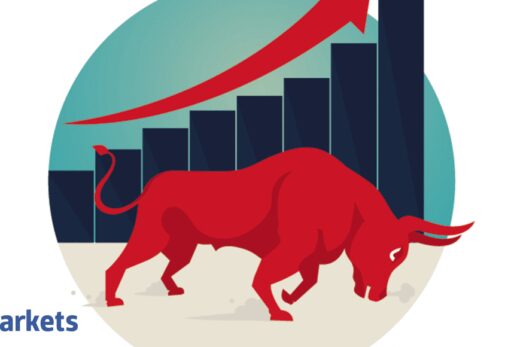Will industrials and cyclicals outperform?
I think domestic cyclicals will do very well. We should not underestimate the shift in government policy that has taken place. For almost 13-14 years, the emphasis of policy was to boost the share of wages in GDP. It did not quite work out. The reason is because India has excess labour. If you peg wages too high, then you create inflation. And then to counter that inflation, you lift interest rates and suppress growth. India has uneven supply at best and supply shortages at worst. The other way round is to actually boost the investment cycle for which you need to lift corporate profits. So when we start lifting corporate profits, corporates start thinking about investments. The investments create jobs and consumption. That is a virtuous cycle that blows up when you get reckless investments like we got in 2009-10 and, to some extent, in 2007 as well. Cycles do not last forever. At the fag end of the cycle, investments become more irrational, bank lending zooms and then we get ready for a downturn. But this is a more workable model for India and we have switched back to this model. This was the model that was in place between 1999 and 2004 during NDA-1, which actually sowed seeds for profit boom seen in the subsequent period. It was helped by some tailwind from global factors. We have global factors supporting us now but not to the same extent.
The domestic policy looks very strong. There are other things that are supporting India. It is something we call as the multi-polar world, shifting away from its bipolar position held for almost two decades where China was the main producer and US was the main consumer. In the multi-polar world, production is getting more diversified, multinationals are looking to move away from China and consumption is also spreading away from the US into other areas like Asia. India is sitting in a very-very good position. It has a ready market and a place where companies will want to setup production facilities. Hitherto, they were frightened of doing greenfield in India because it was tough to do business. The production-linked incentives changed that because it throws a monetary incentive.
So there is a big capex cycle coming to India. Buy cyclicals, industrials, financials and discretionary consumption over globally-facing sectors or defensives like consumer staples.
HDFC Bank is underperforming but the State Bank of India (SBI), PSUs and a lot of other under-owned stocks are outperforming. So do you think the market has taken a decisive turn towards the so-called value stocks?
I do not like the description of value. In stock markets, you invest only in value. Value is defined as something where the future cash flows and the present value of future cash flows, which is essentially dividends for equity shareholders, exceed the current price. There is no other definition of value. Low price-to-book value, low price-to- earnings are nothing but another way of stating the same.
We have to be careful about describing something that is carrying a low multiple as value. I distinguish this as deep value and cheap value. I always prefer deep value – stocks that are trading at a discount to their present value of the future cash flows.
Rotation keeps happening in a bull market because investors chase underperformers and they keep playing catch-up. That is the characteristic of a bull market. In a bear market, the opposite happens. Participants run after winners and try to bring them down. But in a bull market, catch-up plays keep happening. Now there are two ways in which you can approach this; if you are a trader then you want to play these rotation trades. If you are an investor, then you want to invest in solid businesses trading at reasonable valuations and let the whole bull market play out. So it depends on how you are approaching your stock market business. A trader should definitely look at these rotation trades. These are going to be big 20-30-40% moves. There is a huge amount of underperformance that has taken place in a lot of these stocks and there will be a big catch-up.
What is your view on metals? The Street seems to be divided on the outlook for metal stocks.
There are policy factors that affect metals. China is tightening the margin. China is also encouraging more production to be sold at home. So there are contrasting features out there. Investors at the margin should focus on volume growth. My view is that volume growth will start picking up as the economy starts turning and that should support earnings. Metal earnings should remain strong in the foreseeable future. Now some of this is already in the price, but not all of it. So stocks may have more upside left.
I would prefer cement over metals. It is a pure domestic sector where there is no policy challenge from elsewhere. It depends completely on India’s own demand situation. Cement is a sector where we have not seen much capacity addition over the past few years. So when the volume growth breaks out, which I reckon it could in the next two years, we will also see pricing power transfer to producers. So that could be a more exciting sector than metals. It does not take away the point that metals may still have some more upside left.
Do you think that the rally in midcap stocks is overextended?
The average holding period is down from ten months to five months. So market participants are still holding stocks long enough to see its quarterly earnings but not long enough to see dividends or annual reports. If such speculative activities keep rising, then it puts pressure on prices eventually. So we are keeping a close watch on this and we do not want holding periods to go down to 3 months, like it did in 2007. Investors are essentially renting stocks, rather than investing or even trading in them.
The midcaps that are listed on exchanges are not small companies. When we say that large businesses are gaining share, it is against micro and small enterprises which are not listed. Small and micro businesses were disrupted as a consequence of a lot of reforms that happened in the last five years, starting with GST. They are taking time to respond to these changes. In the meanwhile, larger businesses got even bigger fillip during the pandemic because they had greater power to withstand the fall in demand while small businesses got hurt even more. Going forward, if the economic growth normalises, it would actually lift smaller businesses much more than larger businesses. Smaller businesses will outperform larger businesses.
We had the same situation between 2004 and 2007. If you ask me for a 3-4 year view, I think smallcaps will outperform largecaps. On a 6-month basis, given the amount of price momentum that is already there, I would favour largecaps over smallcaps. So two different views for two different timeframes. For the rest of this year, I would quietly shift away from smallcaps into largecaps or balance my largecap exposure.



